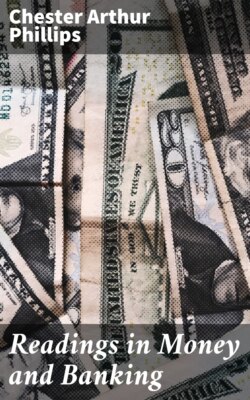Читать книгу Readings in Money and Banking - Chester Arthur Phillips - Страница 72
На сайте Литреса книга снята с продажи.
Provisions of the Act of 1890
ОглавлениеTable of Contents
[24]The act of July 14, 1890, is[25] more remarkable than that of 1878. It is unique in monetary history. It provides that the Secretary of the Treasury shall purchase each month at the market price four and a half million ounces of silver bullion. In payment he shall issue Treasury notes of the United States, in denominations of between one dollar and one thousand dollars. These Treasury notes, unlike the old silver certificates, are a direct legal tender for all debts, public or private, unless a different medium is expressly stipulated in the contract. They differ from the silver certificates in another respect; they are redeemable either in gold or silver coin, at the discretion of the Secretary of the Treasury. The indirect process of redemption which, … was applied to the silver certificates, is replaced for the new notes by direct redemption. The avowed object is to keep the silver money equal to gold, for it is declared to be "the established policy of the United States to maintain the two metals at a parity with each other on the present legal ratio, or such ratio as may be provided by law." The act of 1878 is repealed; but the coinage of two million ounces of silver into dollars is to be continued for a year (until July 1, 1891). Thereafter it is directed that only so many silver dollars shall be coined as may be needed for redeeming any Treasury notes presented for redemption. Practically this means that the coinage shall cease; redemption in silver dollars will not be called for under present conditions. The coinage of silver dollars accordingly was suspended by the Treasury on July 1, 1891; a change which was the occasion of some vociferous abuse and equally vociferous praise, but which in reality was of no consequence whatever.
